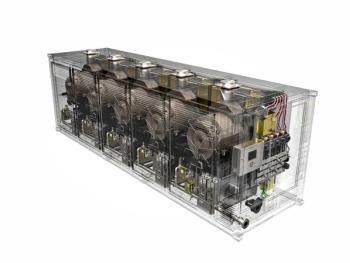
Mitsubishi Power develops ammonia-fired 40 MW gas turbine system
Mitsubishi Power H25 gas turbine[/caption]
Mitsubishi Power began development of a 40 MW class gas turbine that fueled by 100% ammonia (NH3). After combustion and other testing, Mitsubishi Power is targeting commercialization in or around 2025. It will mark the world's first commercialized gas turbine to make exclusive use of ammonia as fuel in a system at this scale. Mitsubishi Power hopes it will help to decarbonize small to medium-scale power stations for industrial applications, on remote islands, etc.
Until now, the Company has pursued technological developments enabling a transition from natural gas fuel used in gas turbine combined cycle (GTCC) systems, which currently emit the lowest amount of CO2 among thermal power generation systems, to hydrogen, which emits no CO2.
In tandem with pursuing active use of ammonia, Mitsubishi Power has also been developing a system in which the waste heat from a gas turbine reconverts ammonia into hydrogen and nitrogen for use in hydrogen gas turbines. This development is carried out as part of a program by Japan's New Energy and Industrial Technology Development Organization
A challenge needing to be addressed with direct combustion of ammonia is the production of nitrogen oxide (NOx) caused by oxidation resulting from the combustion of the nitrogen component of the fuel. Mitsubishi Power is aiming to resolve this issue through commercialization of a gas turbine system that combines selective catalytic reduction (SCR) with a newly developed combustor that reduces NOx emissions, for installation in the Company's H-25 Series gas turbines (output: 40MW class).
Ammonia, which is a compound consisting of hydrogen and nitrogen, is a highly efficient hydrogen carrier, and it can also be directly combusted as fuel. In recent years, the concept of ammonia as a combustible fuel has gained attention from two perspectives: carbon neutrality through transition to a hydrogen society, and minimizing environmental impact caused by existing energy modes.
Newsletter
Power your knowledge with the latest in turbine technology, engineering advances, and energy solutions—subscribe to Turbomachinery International today.




